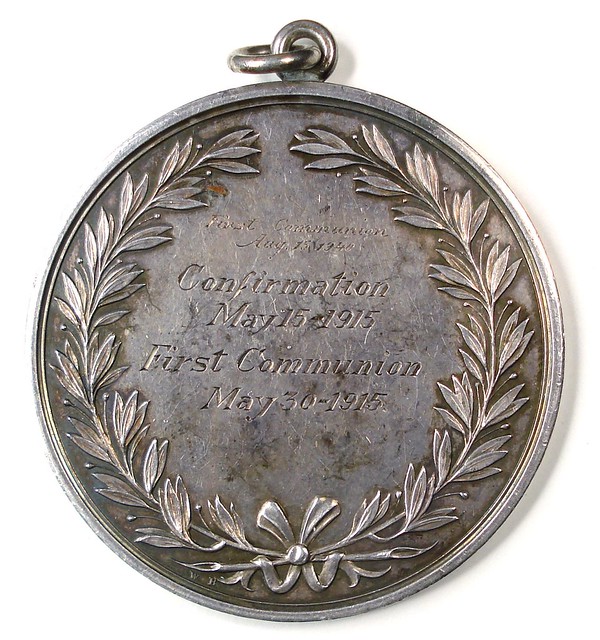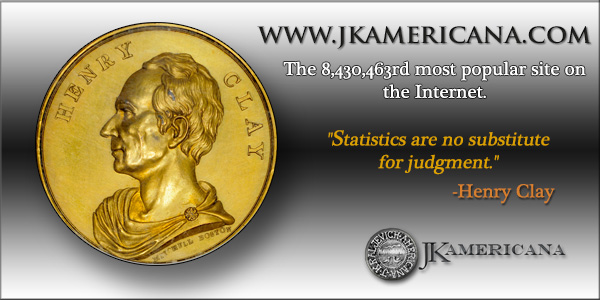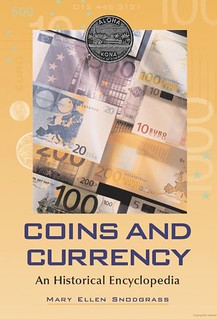
PREV ARTICLE
NEXT ARTICLE
FULL ISSUE
PREV FULL ISSUE
MORE ON THE MYSTERY WB WREATH-WREATH MEDALLast week Jonathan Brecher discussed this unusual engraved silver medal with wreath designs on both sides. -Editor   Jeff Rock writes: Wonderful issue as always. On Jonathan Brecher's medal, the WB could stand for Wright & Bale, and not be an engraver's initials. I would also suggest carefully checking the edge - that unusual "step" to the edge might mean that the heavy outside rim is actually a silver bezel, with the loop attached to that and not to the medal itself, and that could indicate that instead of a struck medal the bezel is holding together two shells. Hard to tell without seeing it or a photo of the edge, but worth looking at! Still, a very interesting specimen. Thanks. Tony Terranova also wrote in to suggest Wright & Bale, the New York firm of Charles Cushing Wright and James Bale, maker of medals and tokens in the first part of the nineteenth century. I passed these thoughts on to Jonathan, who copied Medallic Washington author Neil Musante on his response. -Editor Jonathan Brecher replies: Wright & Bale is a good thought that I hadn't considered. Now that I've considered it... I don't love it. William Barber's last works were in the 1870s, meaning that this medal would have been kicking around for 40 years before being used in 1915. Wright & Bale were from the 1830s, giving an 80-year gap. That's not impossible, of course. Just not my first choice. Also, although I don't have a full catalog of Wright & Bale, the ones I could find of their medals are all smaller than this one (max 45 mm or so). Very little of their output is related to award-type medals. And the ones that I see signed with initials are signed with an ampersand: "W & B" So all told, I'm thinking "not Wright & Bale". Fortunately, we have someone who really ought to have a pretty definitive answer if I'm wrong. Neil, did Wright & Bale produce anything similar to the piece I showed in last week's E-Sylum? As for this being two shells with a bezel, I think not on that one either. I'm seeing no sign of a gap when looking at the interior rim under a microscope. It gives a strong, clear ring test. Also (although not very clear in my pictures, there is a vertical raised area reaching inward from 1200 on both sides. It looks to me like the loop was screwed in, and pushed up the metal on both sides as it was inserted. That suggests to me that there wasn't enough room for the screw in the first place, and so likely solid rather than two shells. On the other hand, suggesting what it isn't doesn't get us any closer to what it is. So what do I know... Thomas Edison would argue that you ARE getting closer - we just don't know how long the journey is. He also said "Our greatest weakness lies in giving up. The most certain way to succeed is always to try just one more time." -Editor Neil Musante writes: I'm with Jonathan on this one - definitely not Wright & Bale. William Barber was long dead by 1915, but perhaps an unused die? The medal is curious as well. It looks like a marriage medal on one side, or possibly a baptism, and then showing the dates of communion and confirmation on the other. Later a child receives first communion in 1940??? Interesting. Can you make out the names on the front? Maybe they are Barber descendants. Jonathan writes: It's a communion medal, used once for the father in 1915 and then again by his daughter in 1940. I poked at their background for a bit - I have an account at ancestry.com - and I don't see any interesting numismatic connections for the previous couple of generations. Jeff Rock writes: I would add a quote of another wise man, Sherlock Holmes: "When you have eliminated the impossible, whatever remains, however improbable, must be the truth."
By the way, I came across information on Wright & Bale in a book I was unfamiliar with via a Google Books preview. The 572-page Coins and Currency: An Historical Encyclopedia by textbook author Mary Ellen Snodgrass was first published in 2003 by McFarland. Back in 2007 Ralf W. Boepple asked about it. If anyone has this book, would you care to write a review for us? -Editor To see the preview on Google Books:
To read the earlier E-Sylum articles, see:
 Wayne Homren, Editor The Numismatic Bibliomania Society is a non-profit organization promoting numismatic literature. See our web site at coinbooks.org. To submit items for publication in The E-Sylum, write to the Editor at this address: whomren@gmail.com To subscribe go to: https://my.binhost.com/lists/listinfo/esylum All Rights Reserved. NBS Home Page Contact the NBS webmaster 
|

